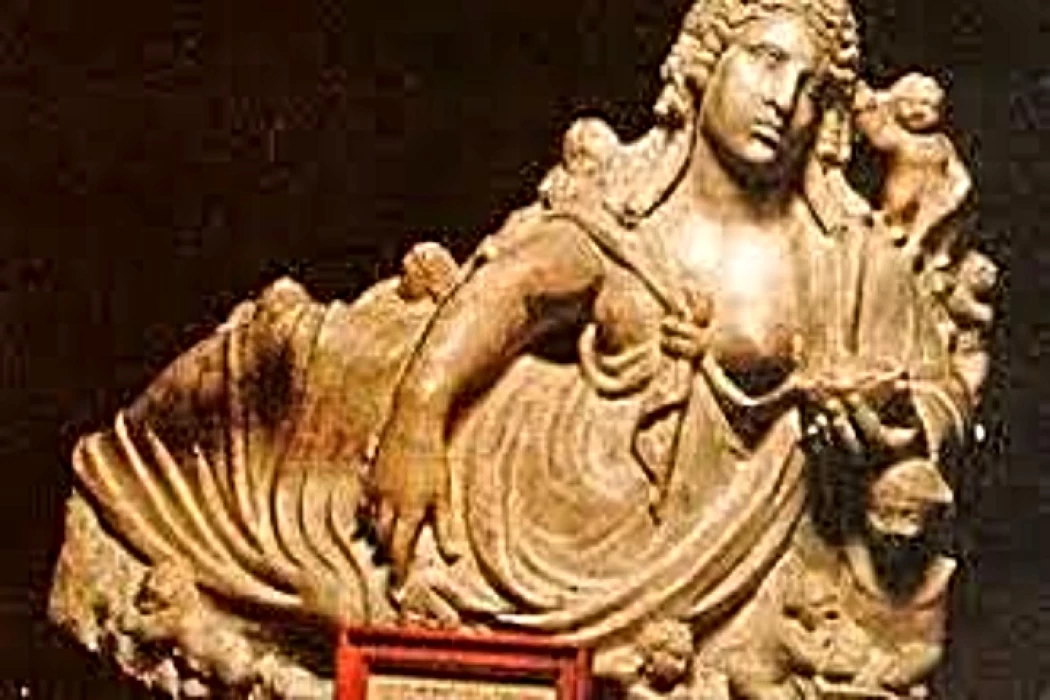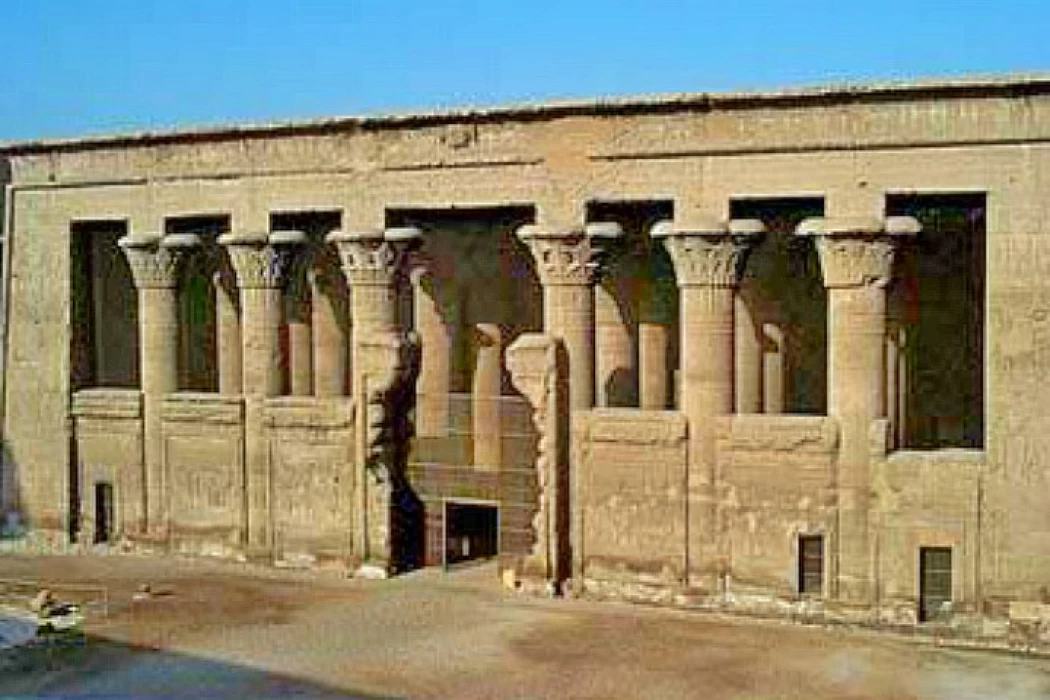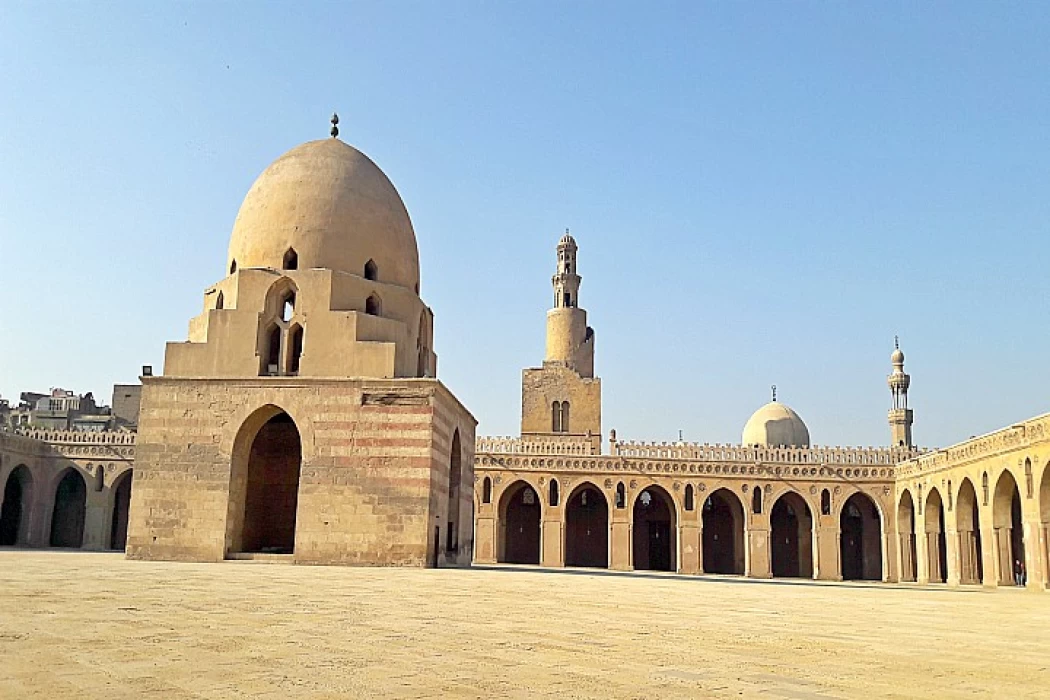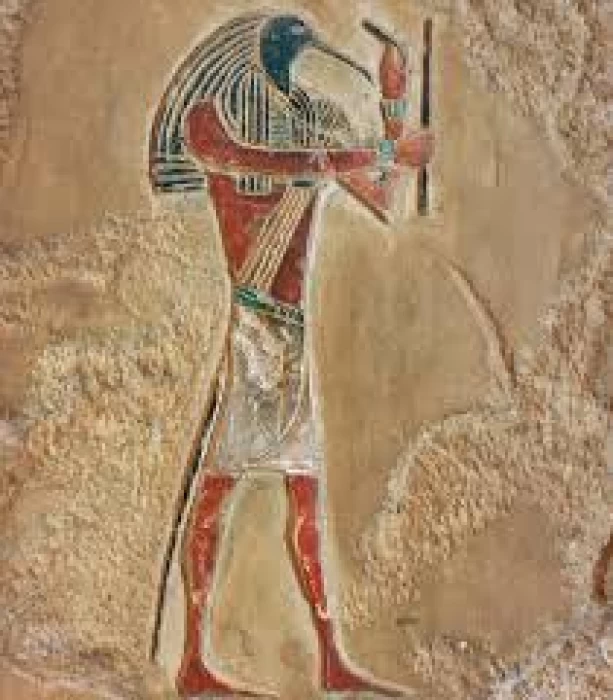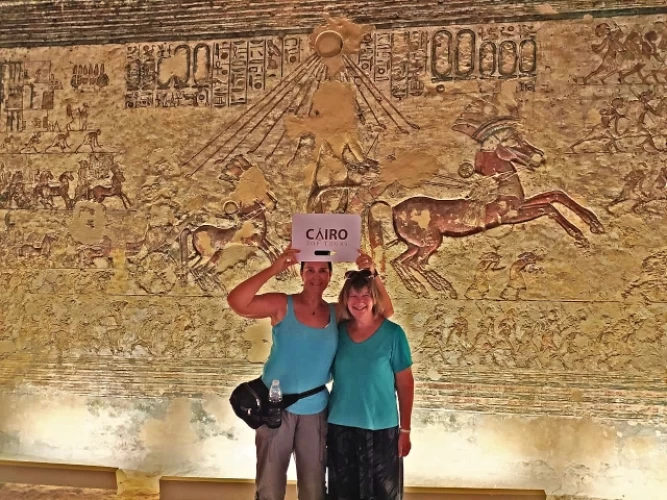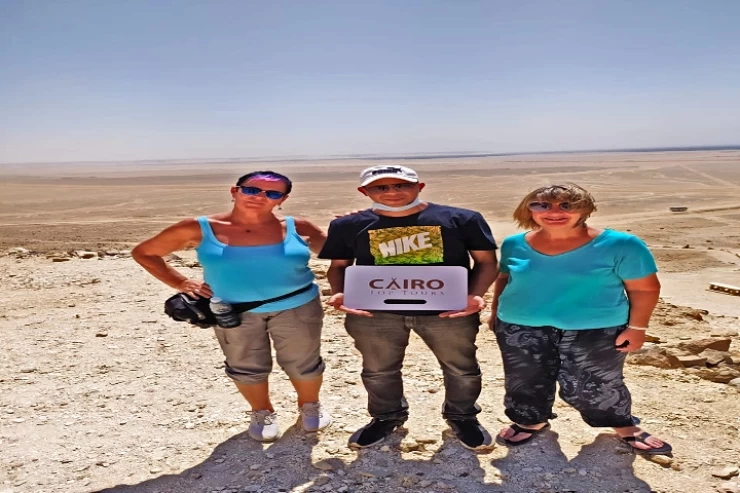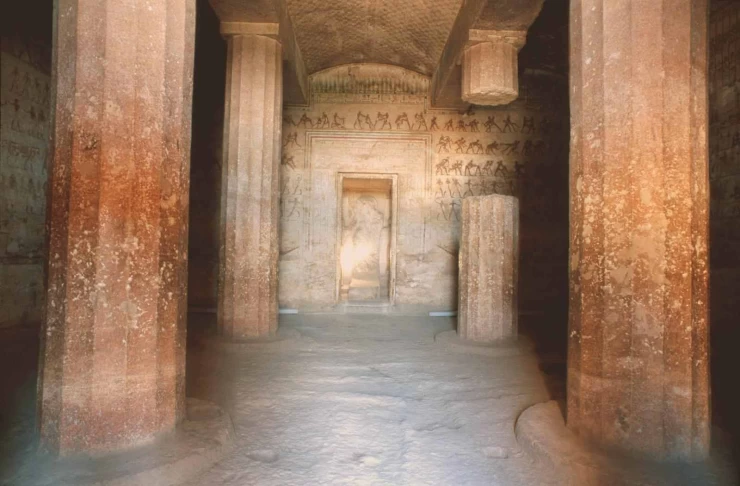
Beni Hassan Tombs
Minya
Minya is importantly one of Egypt's governorates; located in the centre of the country on the western bank of the Nile, it is known informally as the "Bride of Upper Egypt" because of its very charming scenery and unique archaeological monuments ranging from the Pharaonic period to modern eras. Minya owes its strategic significance and ancient history to being one of the richest governorates in archaeological sites and ancient temples.
Bani Hassan Tombs
Archaeologically, Bani Hassan is the site of an ancient Egyptian necropolis about 20 kilometers south of the city of Minya in an area called Middle Egypt, extending between Assiut and Manaf (Mit Rahina).
The temple of Beni Hassan is one of the most important monuments in the Minya Governorate and forms part of the Beni Hassan Tombs of the Middle Kingdom (perhaps 2000–1800 BC). This site located on the eastern bank of the Nile River, south of the modern city of Abu Qurqas, includes several tombs that were cut into the cliffs, belonging to the rulers of the sixteenth region of ancient Egypt.
The site is principally Middle Kingdom in date from about the 21st century BC to about the 17th century BC, especially during the Middle Bronze Age, but there are some Old Kingdom tombs in the necropolis. South of the site is a temple built by Queen Hatshepsut and her successor, King Thutmose III; it is dedicated to the local goddess, Bakht. Today, it is known as the Grotto of Artemis, since the Greeks combined the Egyptian goddess Bakht with their goddess Artemis, and the temple is partly underground.
Architectural Design of the Bani Hassan
The Beni Hassan Tombs are uniquely designed, carved into the mountain to show how ancient Egyptian architecture relied on natural rocks to create temples and tombs. The site includes more than 39 tombs, the most famous of which are the tombs of Khnum Hattab II and Amenemhat, two of the region's top rulers during the Middle Kingdom. These tombs are characterized by wall paintings depicting daily life activities such as fishing, farming, and various industries, which shows the development of social and economic life in that period.
Importance of Bani Hassan tombs
Beni Hassan is the most prominent archaeological site in Egypt, representing the development of architecture and art in the Middle Kingdom.
The ancient Egyptians' funerary traditions and religious beliefs are also a testament to the site, as the inscriptions on its walls give a detailed idea of the religious rituals and lifestyles of the time.
Discovery and restoration
Though several archaeological excavation and restoration campaigns were executed for the preservation of unique inscriptions and architecture at the site.
The site is currently being developed and maintained by the Egyptian Ministry of Tourism and Antiquities with international archaeological missions to better attract tourists and researchers in the field of ancient Egyptian antiquities.
Beni Hassan Temple and its ancient tombs are some of the most prominent landmarks that show the greatness of ancient Egyptian civilization, and it is a special tourist and archaeological place for those who love history and civilizations.
Latest Articles
Admin
The Graeco-Roman Museum
The Greco-Roman Museum of Alexandria is Egypt's most important archaeological museum, displaying a wide and impressive array of antiquities of the Roman and Greek periods, a testament to Alexandria as a hub of culture and civilization in the ancient world.
Admin
Temple of Khnum
The Temple of Khnum in Esna is a great religious monument that stands as a living record of the excellence of Egyptian artists and priests during the Ptolemaic and Roman eras and should attract every lover of Egyptian history and civilization.
Admin
Wadi El Rayan
Wadi El-Rayan is one of the most important natural tourist attractions in Egypt, especially in Fayoum, where there are many wonderful places such as waterfalls and springs for medical tourism, as well as mountains for safari and camping.
Admin
Muslim Conquest in Egypt
Egypt became part of the Islamic world and played a pivotal role in Islamic and Arab history. The conquest had a different aspect than many conquests, as it was characterized by organization and negotiation, as well as military power.
Admin
God Thoth
Thoth served as the spiritual representation in Egyptian mythology whose divine nature embodied reason as well as justice and eternal wisdom. The legacy from Thoth spread throughout thinking, religion and science, thus preserving his name in Egyptian and Greek philosophical works.
Admin
Tourism in Aswan
Aswan is one of the most wonderful tourist cities in southern Egypt, where tourists come to it annually to see many of its wonderful monuments and temples, as well as the beautiful Nubian village. Tourism in Aswan is one of the most important tourist attractions in Egypt.
